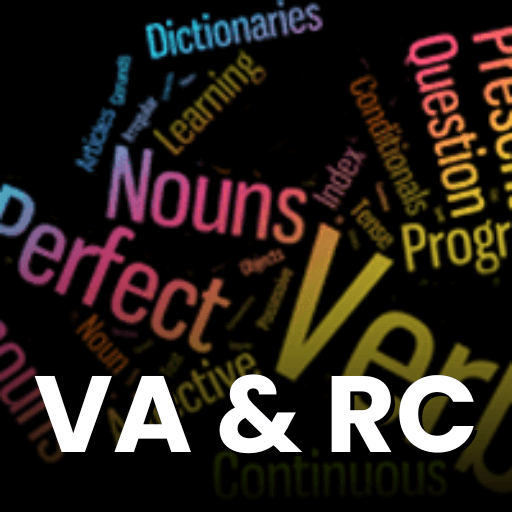Best Study Material for Class 9 Exam
Class 9 Exam > Class 9 Notes > Social Studies (SST) Class 9 > Key Concepts - Poverty as a Challenge
Key Concepts - Poverty as a Challenge | Social Studies (SST) Class 9 PDF Download
| Table of contents |

|
| Poverty |

|
| Poverty Line |

|
| Inter-State and Global Poverty Disparities |

|
| Causes of Poverty |

|
| Anti-Poverty Measures |

|
| The Challenges Ahead |

|
Poverty
- Poverty is a common issue seen in everyday life, appearing in various forms such as landless workers, crowded urban slums, daily wage earners, and child labourers. In fact, one in every five people in India is poor, which means approximately 270 million people lived in poverty as of 2011-12.

Poverty as Seen by Social Scientists
- Poverty is examined using various indicators, such as income, consumption, illiteracy, malnutrition, access to healthcare, job opportunities, and essential services. Central to poverty discussions is the idea of the poverty line.
- Social scientists now view poverty through the concept of social exclusion. This refers to the situation where individuals or groups lack access to resources, benefits, and opportunities, which goes beyond just income levels.
- According to this view, poverty is about the poor living only among other poor people, which prevents them from experiencing the social equality enjoyed by those in better circumstances.

- Vulnerability to poverty refers to the higher chances of certain communities—like members of disadvantaged castes or individuals such as widows or people with disabilities—becoming or staying poor in the future.
- This vulnerability is influenced by the available options for these communities in terms of assets, education, health, and job opportunities.
- It also assesses the risks these groups face from events like natural disasters, terrorism, or economic difficulties, as well as their ability to cope with such risks.
- Viewing poverty through the lens of social exclusion highlights how individuals are trapped in poor environments, cut off from the social equality that others in wealthier settings enjoy.
Question for Key Concepts - Poverty as a Challenge
Try yourself:
What is the concept of poverty analyzed by social scientists?View Solution
Poverty Line
The poverty line is a way to identify those who are poor and to measure poverty levels. It is based on the basic needs for food, clothing, footwear, fuel, light, education, and medical care necessary for survival.
 Poverty Line Explanation
Poverty Line Explanation
Calorie Requirements and Measurements
- The recognised average calorie requirement in India is 2400 calories per person per day in rural areas and 2100 calories per person per day in urban areas.
- The poverty line is updated periodically, usually every five years, through sample surveys by the National Sample Survey Organisation (NSSO).
- In the year 2011-12, the poverty line was set at Rs 816 per month for rural areas and Rs 1000 for urban areas.
- International organisations like the World Bank use a standard poverty line of a minimum of $1.90 per person per day (in 2011, purchasing power parity).
Poverty Reduction Trends
- The percentage of people living below the poverty line decreased from about 45% in 1993-94 to 37.2% in 2004-05.
- This proportion further fell to around 22% in 2011-12, with expectations of dropping below 20% in the future.
- Despite a percentage drop in poverty from 1973 to 1993, the actual number of poor people reduced significantly from 407 million in 2004-05 to 270 million in 2011-12, reflecting an average annual decline of 2.2 percentage points during that period.
Inter-State and Global Poverty Disparities
Inter-State Disparities
- Poverty rates differ significantly across Indian states. Bihar and Odisha have high poverty levels, with ratios of 43 percent and 47 percent respectively.
- The state with the lowest poverty rate is Jammu and Kashmir, which has a ratio of only 3.5 percent.
- Factors such as regional strategies, land reforms, and public distribution systems play a crucial role in reducing poverty.
Global Poverty Scenario
- Globally, poverty rates dropped from 16.27% in 2010 to 9.05% in 2019, though this reduction varied by region.
- China and countries in Southeast Asia benefited from rapid economic growth and investments in human resources.
- Poverty in China fell from 2.1% in 2014 to 1.2% in 2015, and further to 0.1% in 2020.
- In South Asia, the number of people living in poverty decreased from 510.4 million in 2005 to 274.5 million in 2013.
- Sub-Saharan Africa saw a slight decrease in poverty from 36.6% in 2017 to 35.4% in 2019.
- Latin America, however, experienced an increase in poverty rates from 4.4% in 2017 to 4.6% in 2019.
- Some former socialist countries, such as Russia, have seen a resurgence of poverty.
- The UN Sustainable Development Goals aim to eliminate all forms of poverty worldwide by 2030.
 Graph Depicting Inter-State Disparities
Graph Depicting Inter-State Disparities
Question for Key Concepts - Poverty as a Challenge
Try yourself:
What is vulnerability?View Solution
Causes of Poverty
- Historical events from British rule, along with low economic development and unfair sharing of resources, have led to poverty. The colonial government's policies harmed traditional crafts and hindered the growth of industries like textiles.
- A shortage of land, income gaps, and difficulties faced by small farmers make poverty worse. The low level of economic development during British rule is a key historical factor, combined with a rapidly growing population.
- Our agricultural sector has not created enough jobs for farm workers. Similarly, industries haven’t provided enough employment for job seekers.
- A major reason for poverty is the unequal distribution of land and other resources. Post-Independence land reforms have not significantly improved conditions for many rural poor due to poor execution.
- Various social and economic factors also play a role in poverty. People in India, including the very poor, spend considerable amounts on social events like weddings and festivals.
- Small farmers require money for agricultural essentials such as seeds, fertilisers, and pesticides. With little savings, they often borrow money. Unable to repay their debts, they fall deeper into poverty.
- Poverty is assessed through indicators related to income and consumption, including illiteracy and malnutrition.
- A clear example of social exclusion is the caste system in India, which prevents certain castes from having equal opportunities.
Anti-Poverty Measures
- The elimination of poverty has been a primary goal of India's development strategy. The current approach to fighting poverty by the government is based on two main areas: promoting economic growth and targeted anti-poverty programmes.
- For around thirty years, up to the early 1980s, there was minimal growth in per capita income and little reduction in poverty levels. Official estimates indicated that about 45 percent of the population was living in poverty during the early 1950s, a figure that remained unchanged despite the rise of urban poverty, with many people residing in slums.
- Another aspect of high poverty rates is significant income inequality. A major reason for this is the unequal distribution of land and other resources. Despite various policies, meaningful solutions have been elusive.
- Major initiatives, such as land reforms aimed at redistributing assets in rural areas, have often been poorly implemented by state governments. Since a lack of land resources is a significant cause of poverty in India, effective policy implementation could have bettered the lives of millions of rural poor.

 |
Download the notes
Key Concepts - Poverty as a Challenge
|
Download as PDF |
Download as PDF
Anti-Poverty Measures
- The current anti-poverty strategy of the government is based broadly on two planks:
(1) promotion of economic growth
(2) targeted anti-poverty programmes.
Growth in the agriculture sector is much below expectations, which has a direct bearing on poverty, as a large number of poor people live in villages and are dependent on agriculture. In these circumstances, there is a clear need for targeted anti-poverty programmes.
Although there are many schemes formulated to affect poverty directly or indirectly, some of them are worth mentioning:
- Mahatma Gandhi National Rural Employment Guarantee Act (MGNREGA): This act aims to provide 100 days of wage employment to every household to ensure livelihood security in rural areas.
It also focuses on sustainable development to address issues such as drought, deforestation, and soil erosion. Notably, one-third of the proposed jobs have been reserved for women. - Antyodaya Anna Yozana (AAY): This is another important scheme that will be discussed in the next chapter, relevant for understanding the broader context of poverty alleviation measures.
- Prime Minister Rozgar Yojana (PMRY): Launched in 1993, this scheme aims to create self-employment opportunities.
The Challenges Ahead
- Even though poverty has decreased in India, it continues to be the country's biggest challenge. Approximately 270 million (or 27 crore) people live in poverty, highlighting the seriousness of the issue.
- There are noticeable differences in poverty levels between rural and urban areas, as well as among various states.
- Some social and economic groups are more at risk of falling into poverty, indicating the need for targeted support.
- Progress in reducing poverty is anticipated in the next ten to fifteen years, largely due to increased economic growth, a focus on universal free elementary education, a decline in population growth, and the growing empowerment of women and economically disadvantaged groups.
- It is essential to expand the definition of poverty from just a basic level of living to a more reasonable standard, as the official definition only reflects a small part of what poverty means to people.
Question for Key Concepts - Poverty as a Challenge
Try yourself:
What is the poverty line based on in India?View Solution
The document Key Concepts - Poverty as a Challenge | Social Studies (SST) Class 9 is a part of the Class 9 Course Social Studies (SST) Class 9.
All you need of Class 9 at this link: Class 9
|
56 videos|439 docs|80 tests
|
FAQs on Key Concepts - Poverty as a Challenge - Social Studies (SST) Class 9
| 1. What is the poverty line and how is it determined? |  |
| 2. What are the main causes of poverty? |  |
Ans. The main causes of poverty include lack of education, unemployment, low wages, economic instability, and social factors like discrimination and inequality. Additionally, factors such as natural disasters, health issues, and lack of access to resources can also contribute to the persistence of poverty.
| 3. How do inter-state and global poverty disparities manifest? |  |
Ans. Inter-state and global poverty disparities can be seen in the significant differences in income and living standards between regions and countries. For example, developing countries often experience higher poverty rates compared to developed nations due to factors like economic development, access to education and healthcare, and political stability. These disparities result in unequal opportunities and quality of life for individuals.
| 4. What are some effective anti-poverty measures? |  |
Ans. Effective anti-poverty measures include providing access to quality education, creating job opportunities, offering social welfare programs, and promoting sustainable economic growth. Governments can also implement policies that support small businesses and improve infrastructure, which can help lift people out of poverty.
| 5. What challenges do we face in combating poverty? |  |
Ans. Challenges in combating poverty include political instability, inadequate funding for social programs, and systemic inequality. Additionally, global issues like climate change and economic downturns can exacerbate poverty levels, making it difficult for governments and organizations to implement effective solutions. Addressing these challenges requires coordinated efforts and long-term strategies.
Related Searches

































